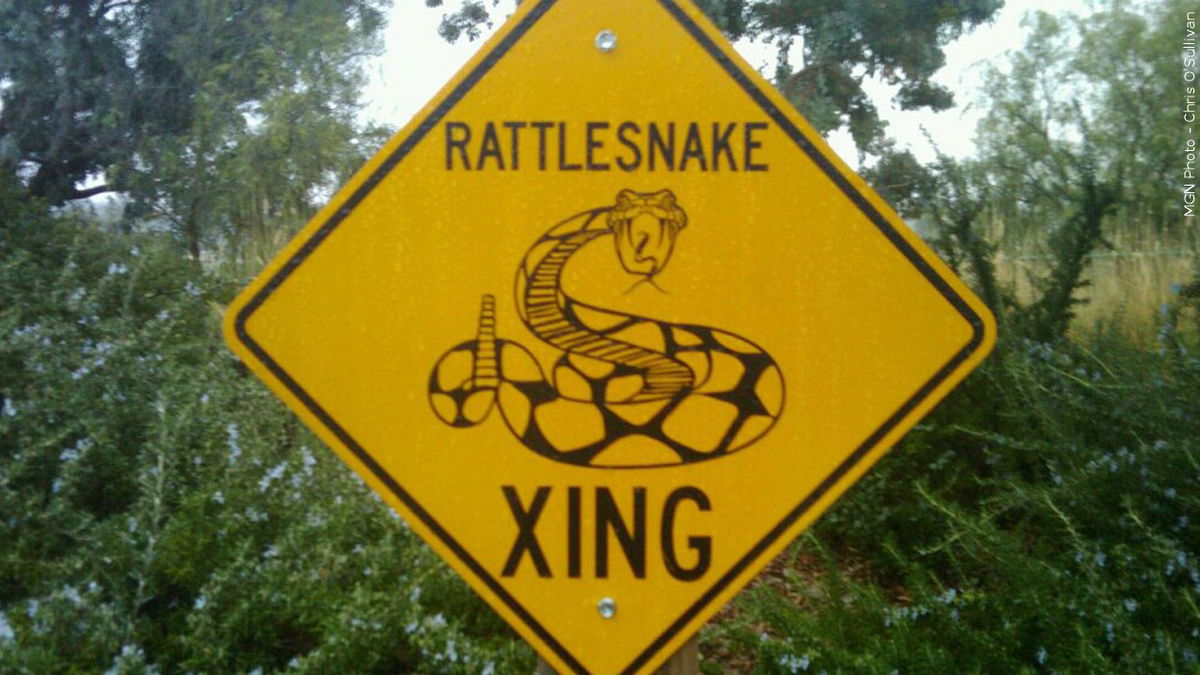Newborn rattlesnakes at a Colorado ‘mega den’ are making their live debut

By MEAD GRUVER
CHEYENNE, Wyo. (AP) — A “mega den” of hundreds of rattlesnakes in Colorado is getting even bigger now that late summer is here and babies are being born.
Thanks to livestream video, scientists studying the den on a craggy hillside in Colorado are learning more about these enigmatic — and often misunderstood — reptiles. They’re observing as the youngsters, called pups, slither over and between adult females on lichen-encrusted rocks.
The public can watch too on the Project RattleCam website and help with important work including how to tell the snakes apart. Since researchers put their remote camera online in May, several snakes have become known in a chatroom and to scientists by names including “Woodstock,” “Thea” and “Agent 008.”
The live feed, which draws as many as 500 people at a time online, on Thursday showed a tangle of baby snakes with tiny nubs for rattles. They have a lot of growing to do: A rattlesnake adds a rattle segment each time it sheds its skin a couple times a year, on average.
The project is a collaboration between California Polytechnic State University in San Luis Obispo, snake removal company Central Coast Snake Services and Dickinson College in Carlisle, Pennsylvania.
By involving the public, the scientists hope to dispel the idea that rattlesnakes are usually fierce and dangerous. In fact, experts say they rarely bite unless threatened or provoked and often are just the opposite.
Rattlesnakes are not only among the few reptiles that care for their young. They even care for the young of others. The adults protect and lend body heat to pups from birth until they enter hibernation in mid-autumn, said Max Roberts, a CalPoly graduate student researcher.
“We regularly see what we like to call ‘babysitting,’ pregnant females that we can visibly see have not given birth, yet are kind of guarding the newborn snakes,” Roberts said Wednesday.
As many as 2,000 rattlesnakes spend the winter at the location on private land, which the researchers are keeping secret to discourage trespassers. Once the weather warms, only pregnant females remain while the others disperse to nearby territory.
This year, the scientists keeping watch over the Colorado site have observed the rattlesnakes coil up and catch water to drink from the cups formed by their bodies. They’ve also seen how the snakes react to birds swooping in to try to grab a scaly meal.
The highlight of summer is in late August and early September when the rattlesnakes give birth over a roughly two-week period.
“As soon as they’re born, they know how to move into the sun or into the shade to regulate their body temperature,” Roberts said.
There are 36 species of rattlesnakes, most of which inhabit the U.S. They range across nearly all states and are especially common in the Southwest. Those being studied now are prairie rattlesnakes, which can be found in much of the central and western U.S. and into Canada and Mexico.
Like other pit viper species but unlike most snakes, rattlesnakes don’t lay eggs. Instead, they give birth to live young. Eight is an average-size brood, with the number depending on the snake’s size, according to Roberts.
Roberts is studying how temperature changes and ultraviolet sunlight affect snake behavior. Another graduate student, Owen Bachhuber, is studying the family and social relationships between rattlesnakes.
The researchers watch the live feed all day.
“We are interested in studying the natural behavior of rattlesnakes, free from human disturbance. What do rattlesnakes actually do when we’re not there?” Roberts said.
Now that the Rocky Mountain summer is cooling, some males have been returning. By November, the camera running on solar and battery power will be turned off until next spring, when the snakes will re-emerge from their “mega den.”


